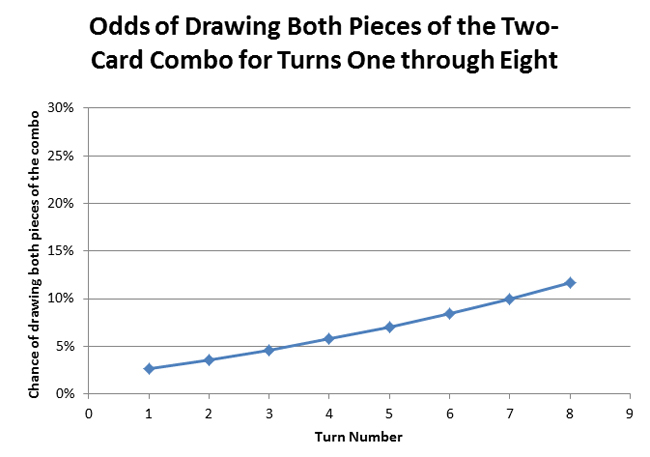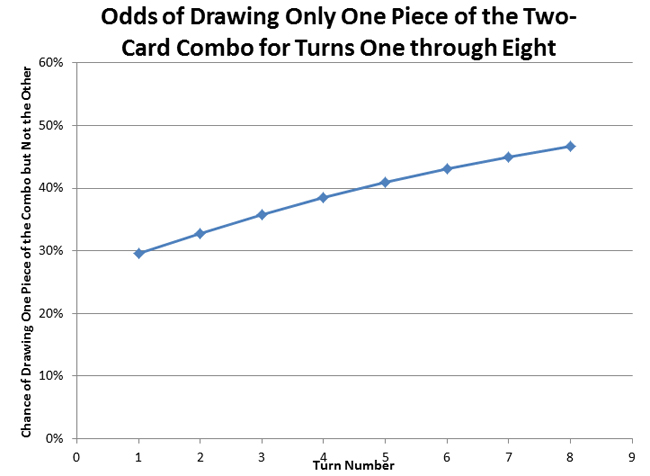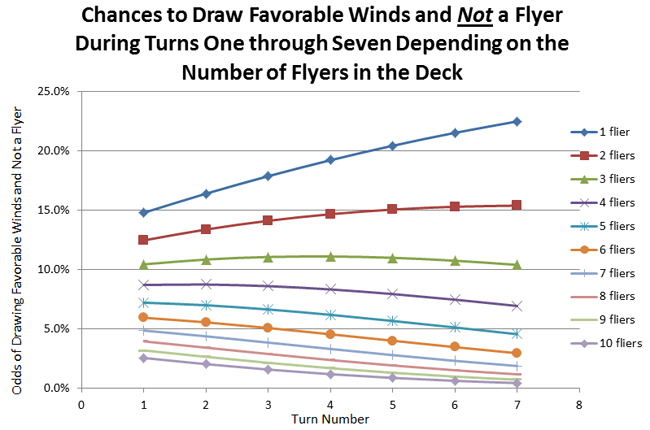There are often a parallels drawn between Magic, chess, and poker. Steve Guillerm recently made a cool analogy between Magic and Scrabble. My analogy is less intellectual and more emotional:
Magic evokes the joy in me that used to come from building LEGOs with my brother when I was four through eight years old.
Sometimes, we just built from the picture because we knew it would look good and work well. Sometimes, we'd tweak it a little. But the most fun was always building the castles, vehicles, robots, and skyscrapers we imagined for ourselves. Maybe they weren't quite as efficient as the suggested ones, but they were ours.
Drafting is like building a LEGO robot on the fly—you don't know what pieces you are going get, and then your robot gets to battle with other robots until one of them kicks everyone else's butt.
"Except sometimes you end up with a dinosaur. Then you have to play really well." –Blake Macary
Draft. The ultimate game of ranking and card evaluation. Every pick, you need to quickly figure out how the card compares to the other cards in the pack, how good it is for your deck, and how good it is against everyone else.
Power Curve
"Power is power." –Cersei Lannister
The most obvious way to evaluate a card is sheer power, which comes down to the cost–benefit ratio. Lauren Lee explained some ways that you may skew up your estimated ratio, including best-case-scenario thinking, worst-case-scenario thinking, and becoming too susceptible to the dies-to-removal argument. In Draft, most cards can generally be placed somewhere on the following scale:
- Absolutely broken-in-half bomb
- Splash-level awesome
- Always playing when in this color
- Usually playing when in this color
- Filler
- Twenty-third card
- Unplayable
When considering this model, your cards will usually distribute themselves in a curve from bombs to the twenty-third card. Your ideal graph is a straight vertical X = (BOMB) line.
From this perspective, you want the components of your deck to do the most awesome things for the fewest resources. In Sealed, this may be all you care about because it's harder for players who want to be aggressive to open enough early-game playables.
In Avacyn Restored Sealed, on average, players will open about six to nine common and uncommon 2-drops total, and that's including Haunted Guardians and Angelic Walls as well as Blood Artists and five 1-power guys. That's only a couple for a two-color deck. It's very rare that a player will open enough of these to be sufficiently aggressive before an opponent starts dropping things that make his board irrelevant.
So, even if your game begins on turn three or four, you are probably going to be okay if that made your power curve close to X = (BOMB).
In Draft, however, you are likely to run into decks that will attempt to push you off the table, so you have other things to keep in mind, such as . . .
Mana Curve
Players have dug deeper and deeper into this aspect of deck building, coming up with brilliant concepts that allow more thorough understanding of mana curve, such as tempo, stock mana, and inertia.
In some ways, this is more complicated than the power curve—your ideal graph is a bell-shaped curve rather than a straight line.
But overall, it’s simpler because it boils down to the math of maximizing your chances to use all your mana every turn, and there are more hard rules for it than for power estimation.
This means that at some point, a card becomes more valuable if it fills up a deficient slot in your mana curve. As far as a creature's converted mana cost goes, it becomes less and less relevant with every additional mana for two reasons:
- The more obvious reason is that you need a 1-drop within the first seven (eight on the draw) cards to use your turn-one mana; but you will look at the total of eleven or twelve cards before you need to see a 5-drop, and that's assuming no missed land drops.
- In the right build, you may play two 2-drops on turn four, a 2- and a 3-drop on turn five, and so on.
This means that 1-, 2- and 3-drops have an extra value boost in Draft.
Common wisdom is to focus on the power curve early, picking up the most explosive cards available to you and worrying about mana curve in the later packs. There’s a good reason for it: early in the Draft, you are sending and picking up signals and know that you have more packs to pick up fillers for your curve. However, it often results in a 2-drop hunt by everyone at the table throughout the entire pack three. Once again, you have an intricate balance going. While you shouldn’t be taking Moorland Inquisitor over Entreat the Angels, you should consider him over Goldnight Commander late in pack one if your 2-drop spot is empty.
Context
Within a Deck
This is just a way of saying “synergy.” Traitorous Blood goes up in value when you've picked up three late Altar's Reaps. You will take Deranged Assistant much higher in pack three if you have three Stitched Drakes. And so on.
Synergy is important; we’ve all known that since forever. WotC works hard to balance the sets by color. Assuming WotC succeeds, it’s not enough to just be in the right colors taking the best cards; you need to have an additional edge. You can do that by pumping up the value of your cards through synergy.
However, just as important is the realization that there is a very delicate balance when considering synergy. Ideally, your cards are good on their own, great together, and occasionally SUPER-GREAT with a specific draw.
I’m sure you’ve heard people justify playing a card that’s worse than a card in his sideboard with, “But I have this!” while pointing to another sub-par card. Let’s look at the numbers. In a forty-card deck, if you have two cards that you would like to draw at the same time, the odds of drawing them together (assuming no blue-mage shenanigans) by turn four while on the play are about 5.7%, 7.1% by turn five, 8.5% by turn six, and 10% by turn seven.

On top of that, you need to draw proper lands, making these percentages even less impressive. More importantly, the odds of drawing one and not the other on turns four, five, six, and seven, respectively, are 38%, 41% and 43%.

You may think that turn-one percentage is not relevant, especially in Limited, when all the combos will play out on later turns. However, the turn-one odds are extremely important because having one or both pieces of your combo may be a determining factor in whether you should keep your opening hand.
If only one of the two cards is sub-par, you can divide the percentages by 2 to calculate the odds of being stuck with “the bad one” by itself, but it’s still pretty grim.
Thus, most of the time, the synergy boost to the value of the card should be a tie breaker between two cards of similar quality rather than a justification of taking a significantly worse card over a better one.
Of course, the more cards you have that synergize with your situational card, the less likely you’ll be stuck with a dead one.
It’s up to you to decide how much risk you are willing to take. The following graph can help you decide how many cards that synergize with a specific card justifies running it over a higher-quality card. For instance, let’s take Favorable Winds and creatures with flying.

Within a Set
It's funny when people go nuts over the first few spoiled cards—sure, the way they interact with the previous set matters, but you can't truly evaluate them without looking at the set as a whole.
This is arguably the most important kind of context—everything else doesn't mean much in a vacuum. An 8/8 flying trampler for 4 is no good if every single other card in the set says, "Destroy target flyer."
Removal is always a good example of this. Crushing Vines would be an insane first pick in Scars, but it’s a frequent sideboard resident today. Ditto for Smite the Monstrous and Rise of the Eldrazi. While with Avacyn Restored you will always play Bone Splinters when running Swamps, had it been printed a set earlier, it'd have been insane in Spider Spawning/Skaab-type decks.
I like to go through Gatherer and see how much of the set a given removal spell kills. For example, Victim of Night kills around 70% of Innistrad creatures and 60% of Dark Ascension creatures. That said, I just made it sound a lot more impressive than it is: You’ll rarely care to target, say, Silverchase Fox. You will suck up some damage from her and then play a 2/3. More importantly, Victim doesn’t deal with some of the things that need to die the turn they hit the board, such as Olivia Voldaren, Bloodline Keeper, and Grimgrin, Corpse-Born.
Similarly, in addition to doming your opponent, Thunderbolt kills about 15% of creatures in Avacyn Restored (excluding Call to Serve, Angels from Entreat and the Spear, Wingcrafter, and Angel's Tomb), but more almost half of them are white, so it’s not as though it’s killing 15% of the creatures you’ll face. That said, unlike Innistrad’s Victim, almost all the creatures it blows up are great targets that need to die.
When evaluating removal, consider these percentages combined with the number of bombs it disarms.
When evaluating creatures within a set for Limited, you need to consider, roughly in order of importance:
- The size compared to other creatures in its slot
- The size compared to other creatures in the neighboring slots
- The number of creatures in that slot in that color
- The removal it dies to
- The effect the converted mana cost of the rest of the set has on the card (basically: Is the format too fast?)
Again, this is a lot to keep track of, but it’s worth mastering, as creatures are the backbone of all Limited decks, and doing a little Gatherer research will pay off—especially early on, when people are only acquiring the feel for the format.
Within a Specific Event
This is all kinds of helpful information that goes beyond the math of the Draft.
For instance, maybe you know that Bobby to your right has drafted exclusively mono-green every FNM since 1998. That hurts the value of the green cards you open because it's likely you will be cut out of it in two of the three packs.
Alternatively, you simply realize that every player in your pod is much better than you. This adds value to your aggro options and subtracts from that of very complicated cards.
Perhaps you know that you will be playing across, and your first round opponent likes to draft expensive control decks with shaky mana. This makes a fast weenie deck more appealing. Or maybe you figure that there is only one player in your Draft who is any competition to you, and you take his preferences into account.
Draft is an insanely intricate art, as there are a million things to balance at all times. But unlike the formula for a perfect deck, the formula for becoming better is very simple. The two best things we can do to improve are practice a lot and keep an open mind to change.
Until next time, enjoy building your LEGO robots.
Thank you for reading, and see you in GP: Cali!!!
Cheers,
Rada
@FlamingBlazes on Twitter
twitch.tv/radawins stream
Rada Keld on Facebook
P.S. Special thanks to:
Steve Guillerm for helping me with my math,
Chris Mascioli for peer editing,
Darwin Kastle for peer editing























